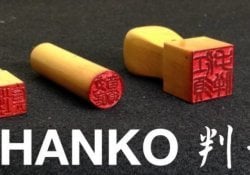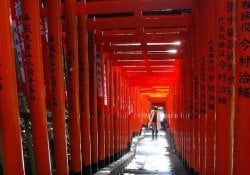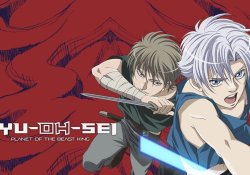I think most here know that the Kanji (ideograms) that the Japanese use in their language came from China. But there are some Kanji that were invented by the Japanese, they are called Kokuji (国字) which can be literally translated as national characters. In this article we are going to see some of these Japanese kanji.
You Kokuji are created by combining existing components (radicals), it is not known for sure how many Kokuji there are, since throughout Japan's history, anyone could create an ideogram, and many were left to be used. There are believed to be over 400 Kokuji, but most of them are rarely used.
Kokuji - Ideograms or Kanji do Japan
Although national kanji do not have a direct connection with the Chinese language, some have the ON reading, due to their radical, or the combination and similarity with some other kanji. Below is a list of the most common and used Kokuji:
Responsive Table: Scroll the table sideways with your finger >>
| Kanji | On | Kun | Meaning |
|---|---|---|---|
| 働 | ドウ | はたら.く | Job |
| 込 | -- | こむ、こめる | crowded, mix, by volume |
| 搾 | サク | しぼる | squeeze, squeezer |
| 峠 | -- | とうげ | mountain peak, mountain pass, climax, ridge |
| 畑 | -- | はた、はたけ | farm, field, garden |
| 匁 | -- | もんめ | Monme (3.75 g) Old weight measurement |
| 枠 | -- | わく | frame, spool, cylinder |
| 塀 | ヘイ | -- | fence, wall |
| 腺 | セン | -- | Gland |
| 榊 | -- | さかき | Sakaki tree (Tree) |
| 辻 | つじ | intersection, corner, crossroads, street | |
| 匂 | にお.う, にお.い, にお.わせる | fragrant, smell (used in the verb Niou) | |
| 躾 | しつ.ける, しつけ | Formation, creation, training |
While many know that Japan imported many ideograms from China, in fact China also took some Kokuji from the Japanese language and imported it into Chinese. For example, they imported the character 腺 (Gland).
Kokuji is nothing new. The first reports of an ideogram created in Japan were before the year 759AD. Meanwhile, the latest Kokuji was created during the Meiji Era.
Unfortunately we won't be seeing a new Kokuji anytime soon. Kanji is increasingly losing its space to hiragana and katakana despite being super necessary. Several words that used Kanji, including Kokuji, are now written with Kana.
I want to show you some more Kokuji even though their usage is unusual. I'll leave a table below with some more kanji. Keep in mind that the Kanji in the table below are probably unusual and written in a more common way.
Responsive Table: Scroll the table sideways with your finger >>
| Kanji | ON | KUN | Meaning |
| 杢 | もく | joiner, carpenter, carver | |
| 圷 | あくつ | low earth | |
| 噺 | はなし | conversation | |
| 噸 | トン | tonnage | |
| 凧 | いかのぼり、 たこ | kite | |
| 凩 | こがらし | winter wind | |
| 俣 | また; ばた | groin, thigh | |
| 麿 | まろ | I you | |
| 糎 | センチ、 センチメートル | Centimeter |
We noticed the use of Kokuji to write words of foreign origin that are currently written with katakana.
There are thousands of other Kanji that are Kokuji that we haven't mentioned in the table above, we won't examine them because their usage is rare.
Kokkun - different meanings
In addition to kokuji, there is Kokkun (国訓). These characters called Kokkun are Chinese characters, but they have a different meaning in Japan. There are many ideograms like that. Some of them are shown in the table below:
| Ideogram. | Japanese | Chinese | ||
|---|---|---|---|---|
| Reading | Meaning | Pinyin | Meaning | |
| 藤 | i ran away | Wisterias | Teng | cane, vine |
| 沖 | ok | open ocean, open sea | Chong | wash, river minor |
| 椿 | tsubaki | camellia, event | Chun | Toona |
| 鮎 | ayu | Ayu (fish) | Nian | Catfish (usually spelled 鯰) |
The ideograms underwent many changes when imported to Japan. Not just in its meaning, but in its pronunciation. This is one of the big reasons why there are so many readings in a kanji. Hope you enjoyed the article.
This article was written in Japanese week! Take the opportunity and watch video lessons on how to study Japanese by clicking on the image below:





